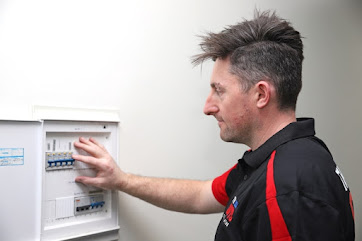In any structure, anywhere in the world, fire extinguishers are a common sight. Few of us, though, are fully adept at using it. Only a small percentage of people are even aware of the various kind fire extinguisher testing and their various uses. A building may experience various disasters, the most frequent of which being a fire break out. Therefore, it is crucial that we have at least a rudimentary understanding of a device that is so pervasive in our daily lives.

What precisely is a fire extinguisher then?
It is a tool used to put out minor, out-of-control fires that don't really go all the way to the roof. Typically, it is a cylindrical cylinder that holds an extinguishing substance that is manually released during a fire. Normally, it serves to clear escape routes during a fire.
How did fire extinguishers come to be?
The modern fire extinguisher evolved over many years from its earliest version, which Ambrose Godfrey created in the first part of the 18th century and was installed in a room rather than being portable. George Manby created the "extincteur," which is the forerunner of the extinguisher as we know it today. This extinguisher was constructed from a portable container that contained pressurised gas and potassium carbonate solution. As the years passed, various new extinguishers emerged, including soda-acid extinguishers, chemical foam extinguishers, carbon tetra chloride extinguishers, and ultimately the extinguishers we see today.
How should an extinguisher be chosen?
Depending on the type of fire, different fire extinguishers are selected. These classes are A, B, C, and D. According on the source and intensity of the fire, multiple classes are typically established. Here are some specifics for each:
Class A - fire extinguishers are used to put out fires that have started on commonplace materials like cardboard, wood, paper, etc. These extinguishers have a number on them that represents how much liquid they can store and how much fire they can put out.
Class B - fires are those started by oil, grease, kerosene, etc. The number on these extinguishers indicates the size of the fire space that they can put out.
Class C - extinguishers are used to put out fires brought on by electrical devices, wiring, and circuit breakers. These don't have any associated numbers.
Class D - refers to fires that are brought on by flammable materials such as sodium, potassium, magnesium, etc. Chemical laboratories are where this is primarily employed.
How is a fire extinguisher maintained?
An extinguisher needs to be maintained in a variety of ways.
* The extinguisher must always be kept at the necessary distance, and it must first be one that has been examined and tested by trained specialists at the time of purchase.
* Chemical extinguishers that are refillable must be emptied and refilled every six years.
* Extinguishers that have been damaged must be replaced right away.
* The testing procedure should be performed each month.
* Above all else, everyone in the building ought to have read the extinguisher's instructions.
Until recently, only office and apartment buildings used
fire extinguisher test and tag. Today, though, they can also be found in private residences. In fact, it is advised to use it in residences because a fire breakout there is also probable.
Visit Our Social Link :-


Comments
Post a Comment